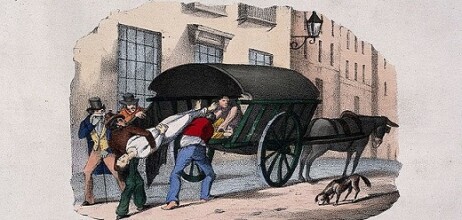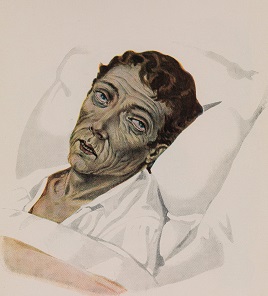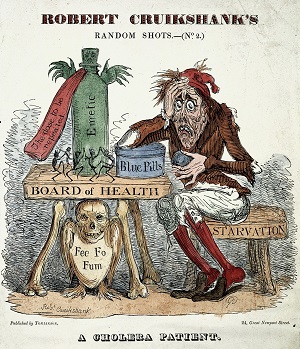‘Mapping the Miasma’- Ireland’s 19th century Pandemic: an analysis of the 1832 Cholera epidemic.
The great Cholera Epidemic of 1832, was the most virulent pestilence to reach these shores since the Black Death. Now almost forgotten, it killed at least 50,000people on this island. Eclipsed by the tragedy of the Famine, the impact and legacy of the cholera on Irish towns and society remains under-studied.[1] I am currently engaged in a comprehensive geographical study of the epidemic in provincial Irish towns. It aims to investigate and map the narrative, geography and comparative magnitude of the event, within the context of the complex political and social events of the period. The epidemic has never been subject to mapping or statistical analysis, despite the significant amount of contemporary data available.
Extensive numerical data as recorded in the newspapers of the period allows a statistical approach to the study, as do the daily reports of the Central Cholera Board, and the specific abstract in the 1841 census. This type of inter-disciplinary investigation forms part of the emerging fields of medical history, life-sciences and public health. The study will, for the first time, chronicle and map the extent of the 1832 epidemic, allowing for a nuanced look at how disease and fever had a significantly different impact and character in urban and rural areas. Comparative case studies of Irish provincial towns will enable an examination of the experience of the epidemic at this important tier of the urban structure in pre-Famine Ireland. Data collected will allow evaluation of the Irish experience against the experience of British and European urban areas, and encourage a re-evaluation of the nature of the Irish epidemic.
Historically, the term ‘cholera’ referred to a severe type of gastroenteritis, characterised by vomiting and diarrhoea. But by 1820, ‘cholera’ came to mean the AsiaticorSpasmodic Cholera, an epidemic form of the disease, which had been spreading westwards from India since 1817. It is an acute, waterborne, diarrhoeal disease caused by the bacterium Vibrio Cholerae. Typical symptoms include stomach cramps, looseness of the bowels, vomiting, severe pain in the limbs, and acute dehydration, which if left untreated, resulted in death, sometimes within hours of the first symptoms. It was an indiscriminate disease, not just confined to the poor.
Cholera arrived in Ireland via Belfast, on the 18 March 1832. It spread to almost every corner of the country during 1832-33, claiming at least 50,700 lives before it finally abated in the late Spring of 1833.It struck hard, but erratically, attacking some towns, while leaving others in close proximity unaffected.
Ireland provided a fertile ground for the spread of fever. The physical condition of the people, both rural and urban was generally poor, following the severe typhus epidemic of 1817-18, and the famine of 1821-22. Regular local outbreaks of famine and fever, left an entire class of people ‘weak for want of sustenance and easy prey to disease’. Successive periods of wet summers in Ireland between 1821-30 resulted in food and fuel shortages, giving rise to an atmosphere rife for spread of infection. Thousands were reduced to begging and vagrancy, and these mendicants helped to spread disease from town to town. Rambling-house visits and attendances at wakes, made the spread of the cholera even quicker.



Published: 30 Nov 2021 Categories: Covid-19 and the Humanities, History, Medicine

